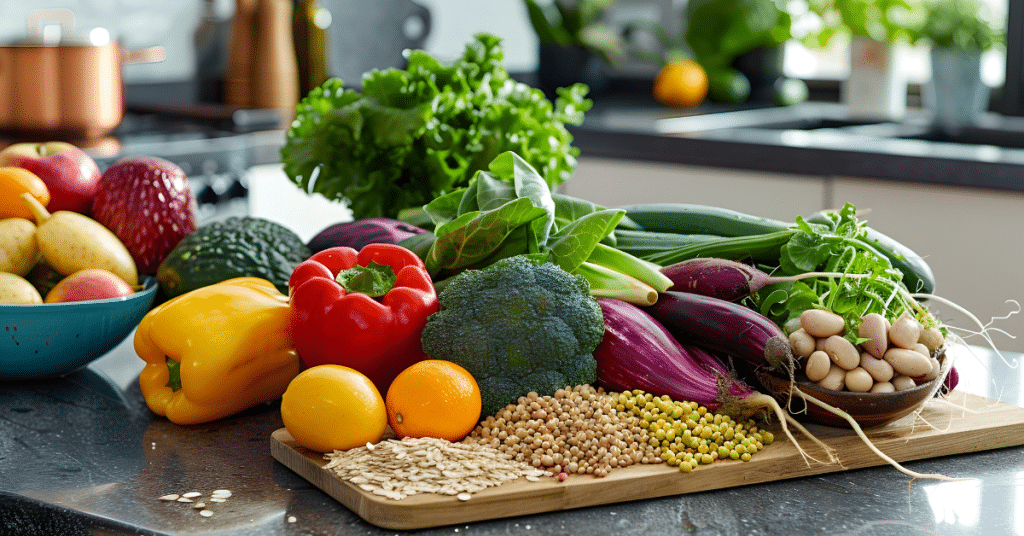

There’s no denying that the general public’s interest in health and nutrition has grown tremendously. As epidemics of lifestyle-related diseases have become more dire so has the appetite increased for alternatives to the standard American diet. Still, many people remain unsure of what constitutes a healthy diet.
Where does the whole food, plant-based (WFPB) lifestyle fit in with all of this? What, even, is the WFPB lifestyle?
A WFPB lifestyle eliminates meat, poultry, fish, dairy, and eggs. However, a WFPB lifestyle is not the same as a vegan diet. Whereas a vegan diet is defined only by what it eliminates, a WFPB diet is also defined by what it emphasizes: a large variety of whole foods.
The term “whole” in WFPB describes foods that are minimally processed. This includes as many whole grains, fruits, vegetables, and legumes as you want. It also includes moderate amounts of nuts, seeds, avocados, natural sweeteners, and certain soy or wheat products that don’t contain added fat, sugar, or salt.
Individuals choosing a WFPB lifestyle avoid heavily processed foods. This means minimal or no highly refined grain products (e.g., white rice, white flour), foods containing added sugars or artificial sweeteners (e.g., confectioners sugar, high fructose corn syrup), or foods containing added fat. Yes, even olive oil.
And that’s it, in less than 10 sentences. The closer we can get to the simple two-pronged approach of 1) avoiding animal foods and 2) emphasizing whole foods, the better. The vast majority of people eating a standard American diet are not struggling with their health due to a lack of precision or tinkering with the finest details; they’re struggling to achieve the most basic evidence-based recommendations. And so, that’s what we focus on.
The following linked articles cover some of the most common questions we receive:
In addition to these and hundreds of other articles that you can access for free on our website, we have many more resources to help you learn about the WFPB lifestyle and get started. Our Whole Food, Plant-Based Diet Guide includes helpful information about shopping, eating out, and substituting common ingredients. Our free-to-join online community CNS Kitchen provides live cooking classes, recipes, and support. Our extensive recipe library (containing around 800 recipes and counting) is a wonderful place to find meal ideas. Our several courses and certificate programs serve those who are interested in furthering their education, advancing their careers, or improving their health: Plant-Based Nutrition Certificate, Whole Food, Plant-Based Cooking: A Beginner’s Course, Food & Sustainability Certificate, and more. Finally, we host numerous transformative events.
It is impossible to overemphasize how accessible this lifestyle can be. You don’t need a calculator to count calories or carbs. There’s no need to avoid cooked foods. Convenience isn’t your enemy. You’re allowed frozen fruits and vegetables, as well as their canned counterparts (just make sure to look for low-sodium options, when possible). Blandness is not a prerequisite. You’re encouraged to experiment with as many spices as you’d like. And finally, contrary to popular belief, a WFPB lifestyle won’t break your budget. Many of the trustiest staples (think beans and potatoes) are among the most affordable foods in the grocery store. This diet doesn’t require specialty items hidden in the health food section. It requires no pails of agave or carts of cashews.
Unfortunately, the popular notion of dieting has become warped and confusing. It implies a struggle and frames each meal as a challenge to overcome. A WFPB lifestyle is different. It’s not a short-term punishment charged by guilt. It’s simply a return to our roots: whole foods, rich flavors, and natural health.
Copyright 2025 Center for Nutrition Studies. All rights reserved.